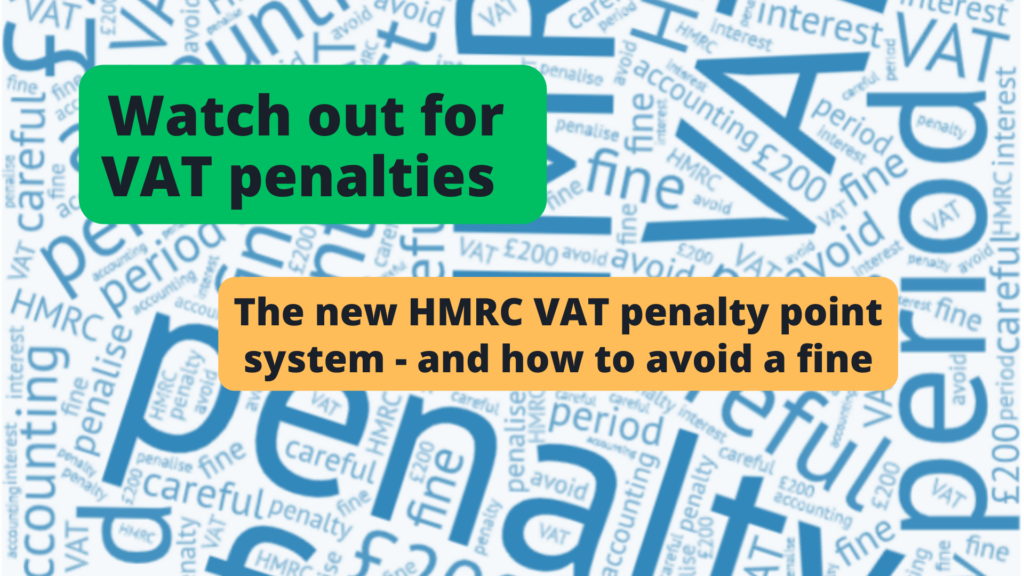New HMRC rules mean that you’ll get penalty points if you submit a VAT Return late. We explain how the new system works and how you can avoid a £200 penalty.

HMRC has introduced a new penalty system for VAT return periods. The new approach started on 1 January 2023 and applies to payments due as of 7 March 2023. It replaces the existing VAT default surcharge.
How does the new VAT penalty system work?
Each VAT accounting period has a deadline by which you need submit your VAT return. For many businesses the VAT accounting period is quarterly, with the deadline set at a month after the end of the quarter.
The late submission penalty works on a points system. For each VAT return submitted late, businesses will receive a penalty point. Once they reach their penalty point threshold they will receive a £200 penalty.
Further £200 penalties also apply for each subsequent late submission while at the threshold.
HMRC has also introduced both late payment and repayment interest, replacing previous VAT interest rules.
What are the penalty point thresholds?
The threshold is set by your accounting period, as follows:
| VAT Accounting period | Penalty Points threshold |
| Annual | 2 |
| Quarter | 4 |
| Month | 5 |
Businesses with an agreement with HMRC to use non-standard accounting periods will be subject to different thresholds. These are detailed on the government website.
When do penalty points expire?
If you don’t reach your threshold, penalty points expire automatically. Each point will expire 24 or 25 months after the missed deadline.
Your penalty points will be removed if you can achieve both of the following…
A: complete a ‘period of compliance’ where all your VAT returns are submitted by the deadline. If you pay VAT quarterly, this period is 12 months.
B: Submit all outstanding returns for the previous 24 months.
See the government website for more detail on how this works.
What if I can’t afford to pay my VAT bill?
HMRC will help businesses that cannot pay their VAT bill in full. Customers may be able to set up a payment plan to pay their bill in instalments. If you propose a payment plan within 15 days of payment being due, that’s accepted by HMRC it, you would not be charged a late payment penalty.
How can I avoid getting VAT penalty points and fines?
As part of Making Tax Digital you should already be signed up to a digital accounting system, which makes VAT submissions simpler. Usually it just involves a few clicks.
Your system may remind you when your VAT return is due – and if not, you could set up manual reminders in your calendar.
The main thing to remember is not just to submit the VAT return, but also to make the required payment within 15 days of the submission deadline.
You could also appoint an accountant or bookkeeper to manage this process for you.
Why has HMRC brought in this new regime?
When HMRC announced this new system, it justified it as penalising ‘only the small minority who persistently miss their submission obligations rather than those who make occasional mistakes’.
The idea is that this approach is fairer. The challenge with the previous system was that a business would get the same penalty whether they were one day late with a VAT payment as if they were one year late.
For most businesses, it is straightforward to submit returns and make payments on time. If that applies to your organisation, this system change should not cause any problems.
Need advice on how best to navigate your VAT responsibilities? We’d love to help. As Lune Valley accountants we help with small business tax management and bookkeeping. Contact us today.

